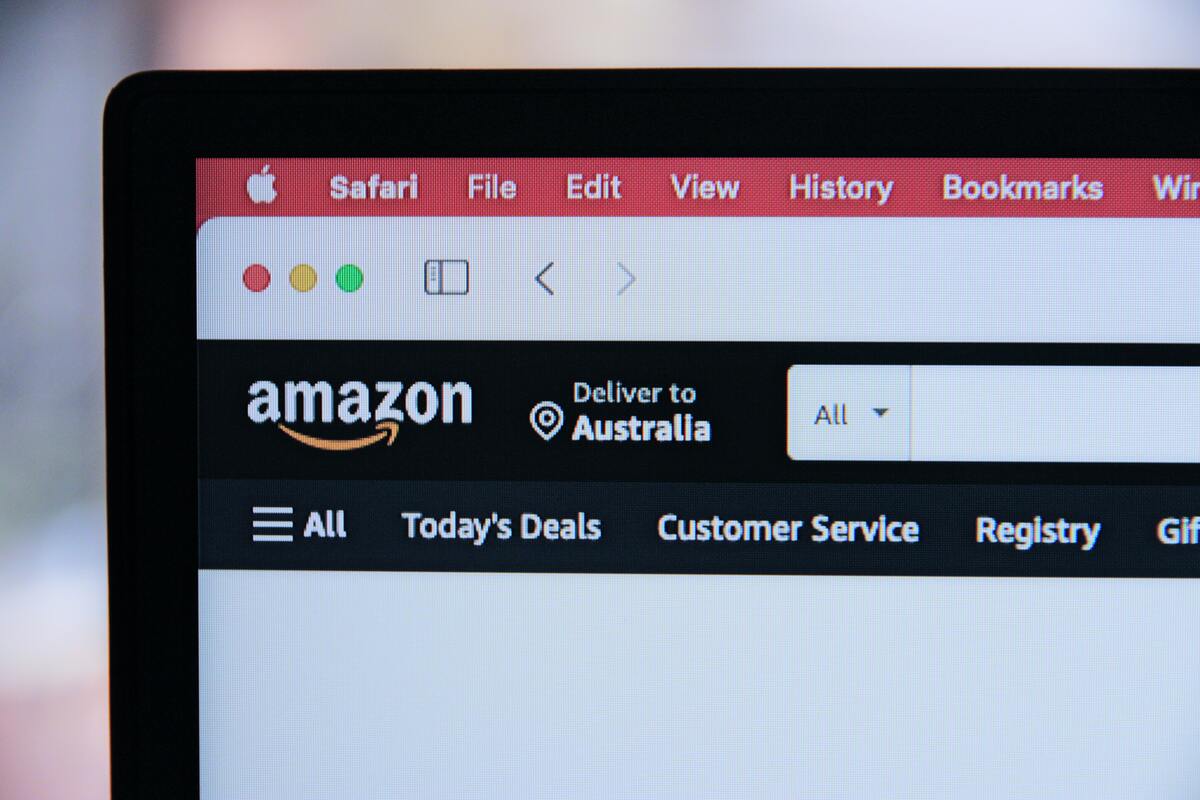
How to Create Stellar Amazon Listings That Maximize Results
How to Create Stellar Amazon Listings That Maximize Results
Greg Walthour, Co-CEO • Intero Digital • August 27, 2021

Because it’s a digital e-commerce behemoth, it’s sometimes easy to overlook the fact that Amazon is also the second-largest search engine on the internet. Google, of course, is still the largest, but Amazon is tailing it by only a little and far outpacing it when it comes to product searches. In fact, 66% of shoppers start their product searches on Amazon, while only 20% start with search engines.
Consumers go to Google for information and are not always focused on buying something. When they head to Amazon, however, they are almost always intent on buying at least one thing, if not several. And consumers check Amazon even if they have found the product in a different place. In fact, when they’re ready to buy a specific product, 74% of shoppers turn to Amazon. So it makes sense to ensure your products can be found on Amazon when the customers come looking.
The infamous Amazon A9 algorithm looks at the listing, its performance, sales history, consumer reviews, and keywords to determine how it will rank in the results list when a customer performs a search using relevant keywords. The main difference between Amazon’s search algorithm and others is that it is highly biased toward products that are already selling well. That should not be a huge surprise; Amazon is in the business of making money, so it’s going to focus heavily on selling products that, well, sell.
When we also consider that Amazon does not report search volumes, assuming search engine optimization tactics that work for products on Google will also work on Amazon is almost certainly going to be a waste of your time. It’s also important to remember that only around 30% of shoppers will move past the first page of results on Amazon. The good news is that there are some straightforward and effective ways to tackle Amazon SEO for your product listings to ensure they appear in front of the customers who are most likely to buy them. Continue reading to learn how to create Amazon listings that generate and maximize results for your business.
Know Your Keywords and Where to Put Them
Every bit of copy you put into an Amazon product listing should be aimed at attracting the algorithm, so it’s essential to know the basics before proceeding. Keywords, of course, are words that customers might use to locate products like yours when they come looking. There are different keywords and various places in which you should use them for maximum effectiveness. We’ll talk about the former first, then the latter.
What is the difference between long-tail vs. short-tail keywords?
Amazon’s search algorithm is mainly concerned with short-tail keywords, or general search phrases that consist of up to three words.
Long-tail keywords are entire sentences and questions/queries used to search for something specific.
Amazon Listing Keyword Basics
Short-tail keywords are key, and they are the best place to start when creating a new listing. You should include as many as possible in the product listing title without coming off as overwhelming or spammy. This is, however, easier said than done, thanks to the many quirks of listing products on Amazon. More on that later.
What about back-end vs. front-end keywords? I’m glad you asked. The answer is pretty simple. Front-end keywords are the ones that the customer also sees. They are found throughout the listing in the product title, bullet points/product features, and product description. On the other hand, back-end keywords are “buried,” so to speak, in the listing data.
In both cases, using relevant keywords helps your listing get indexed in all the right places. Why is indexing even important? Indexing is how the algorithm knows that your product is relevant to the customer’s inquiry in the first place. Once it knows that, A9 can determine how the listing should rank in search results.
Think of the index as a directory. As the “ranking” part comes second, ensuring that your listing is indexed correctly is an excellent place to start. Using relevant keywords throughout the front and back end will ensure customers can find your listings.
Research your keywords thoroughly, and think outside the box when selecting the appropriate ones. You can also search terms that generically describe your product and are easy to weave into the front end but are likely to do something other than the heavy lifting for you on Amazon. Prioritize the terms where you compete with thousands of similar products that also use those keywords.
A reverse ASIN lookup tool is invaluable here, as it allows you to see what keywords are used on any product. A reverse ASIN lookup can also reveal keywords and keyword phrases that are underrepresented on Amazon, presenting an opportunity to start ranking high right out of the gate. Also, keywords should be researched and updated often; trends are constantly changing, and Amazon search optimization is an ongoing endeavor.
To work within the back end, you have 250 characters, including spaces. This is an excellent place to put less obvious keywords so the product is indexed in as many searches as possible.
A quick note to remember: Amazon does not appreciate keyword stuffing. What is keyword stuffing? Trying to “beat” the algorithm by using keywords in excess to the point that it is counterproductive. A good rule of thumb is to make sure the copy visible to the customer is written in a meaningful way that conveys relevant details and flows naturally. It’s not easy, I know! But like everything else, it takes patience and perseverance to get good at it.
Optimizing Amazon Product Titles for SEO: A Balancing Act
Each product category has its character limit and requirements for product titles. Understanding Amazon’s limits and requirements for product titles is easy enough. The more complicated part is understanding your customers’ requirements, which will undoubtedly vary widely within product categories and between customers themselves.
Clever as it is, the Amazon SEO algorithm cannot determine whether the title meets any requirements other than the maximum length, so the degree to which a product’s title is relevant is up to you! The best advice I can give you concerning creating titles for Amazon product listings is this simple, effective formula:
Brand + Item + Title + Size + Color
Within this formula and the Amazon listing character limit that applies in that product category, use as many keywords as possible to attract your ideal customer — the one who will click on the link, add the item to the cart, check out, and leave a positive review. This will be easier in some categories than others because Amazon’s enforcement of the character maximums is relatively inconsistent. In some categories, product title lengths have virtually no character limit because it’s not enforced. In others, you have only 50 characters — try 51 and the listing is suppressed.
Although it’s tempting to take advantage of the inconsistencies in enforcement for product title length by engaging in keyword stuffing, such an Amazon SEO strategy tends to backfire with customers. Also, they’re not interested in reading a novel’s worth of information in a product title. So finding that balance between being long enough to contain all the relevant information and short enough to keep the customer’s attention is the goal.
I always think about product titles from a consumer’s perspective. As a consumer, I want a product’s title to contain all the critical data and be formatted in a way that allows me to gather that data immediately. I appreciate Amazon’s efforts to make sure product titles are relevant, and I always advise my clients not to try and make product titles too long and complicated.
“Size” and “color” in the equation above are placeholders for whatever variation data is relevant to the item. Other variation information might be anything from flavor to style to the team name and more. Including this data in a product’s title will help both the algorithm and the consumer differentiate it from other listings, and it will help you keep things organized in Seller Central. Without those data points in the title, you will not be able to see what is within the parent when viewing the inventory. Work smarter, not harder, I always say!
Optimizing Amazon Product Features and Description for SEO
Even more critical than the product description (we’ll get there), product features/bullet points will be the first things a customer looks at after clicking on the product. Packing these data centers with relevant keywords is vital to attract the A9 algorithm, but in a way that also appeals to consumers. This means writing them in natural language that uses keywords where they fit organically.
Generally, you’re allowed five bullet points of up to 500 characters. While it sounds a bit dramatic, those 2,500 characters can make all the difference in conversions. Higher conversion rates mean better ranking overall, so it’s worth it to take your time researching keywords and crafting each bullet point to maximize SEO and consumer appeal. Paint a picture of the product, and make a compelling case for purchasing it.
Chances are relatively low that your customer will even scroll down to the product description and read it, but that does not mean they absolutely will not. So it must also be written as if they will. It’s more copy through which the algorithm can comb, so make sure it includes relevant keywords and reads well. Nothing makes me, as a consumer, less inclined to buy a product than when there are copious misspellings and grammatical mistakes in its copy. There are no excuses for bad spelling and grammar in 2023.
Intero Digital, the Marketing Agency for You
Remember: Optimization is not a one-and-done task. To do it effectively, your keywords must be researched and updated twice a year to take full advantage of trends and fluctuations. Consumers are fickle, are we not?
Amazon is an ocean, and it sinks or swims out there. Doing product listing page SEO for the A9 algorithm involves consistent attention over time and benefits significantly from experience. If it feels overwhelming, you are correct. It is! This is where a marketing agency like Intero Digital comes in. Our success hinges on yours, so you can rest assured that our team will work diligently to sell your products.
Intero Digital has been helping Amazon sellers grow their presence and sales since 2014, and we have the numbers to prove that our methods work. Our team of experts spends days “elbow deep” in the Amazon catalog, ensuring each product listing is optimized and doing the continual maintenance required. We have a team of specialists with years of optimization experience ready to take your catalog from Page 8 and beyond (i.e., nowhere to be found) to Page 1 of search results.
At Intero Digital, we strive to bring our clients massive value. If you find yourself asking how to optimize your listings, get better product rankings, and increase sales on Amazon, the answer is simple: Hire optimization specialists to do it for you! Let our team do what we do best so you can focus on doing what you do best.



